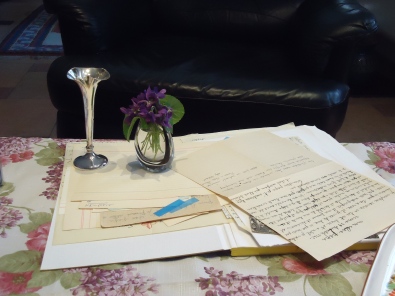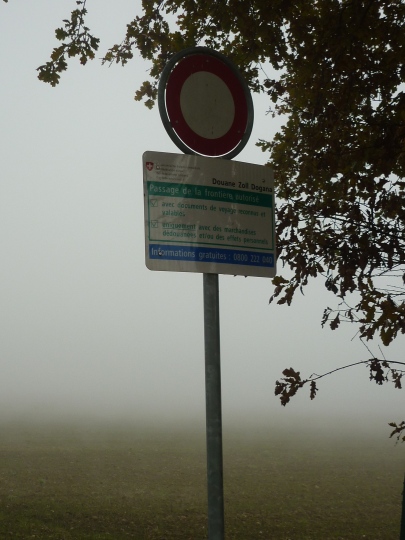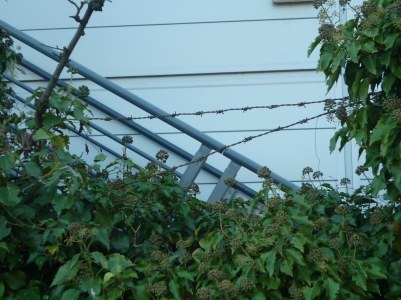Today I went through the archives of Charlotte Weber. They included her personal files, with correspondence and letters between Charlotte and many of the people in her life. I saw two amazing things that I feel the need to post about. The second is even bigger than the first, and brings my research and life full circle.
First, Charlotte had many letters from children who were refugees in Switzerland during the war, both Jewish and non-Jewish. The children, now grown, were writing to her in 1994, which (from what I gathered) was the last year of her life. There were cards for the holidays, for New Years, and some just because. Most of them were in German so I couldn’t read too many, but the idea that Charlotte received many letters, over 50, from those children she helped, was inspiring.
Digging deeper into her file, I came to “thing two”. Charlotte knew and had much correspondence with a woman named Sarah, in Israel. Sarah is a woman who I met through my internship in Israel with Ziv Tzedakah Fund in the summer of 2006. Sarah runs a foundation, Keren Hanan Aynor, named for her late husband, that grants scholarships for education to Ethiopian students in Israel. Sarah and Hanan were Ambassadors in Africa for many years, and had a deep connection to the culture and community. During my Ziv summer, I spent a lot of extra time with Sarah, mostly because she spoke French and was active in France during the war years, working with the Youth Aliyah movement. Sarah worked, voluntarily, as she was a citizen of then Palestine, not Europe, in children’s homes and orphanages, looking after the children and then helping them make Aliyah from a war-torn France. I spent many Shabbat lunches and afternoon coffee dates in her apartment, speaking French and learning about her work.
Meeting Sarah in 2006 was a major turning point for me, as it opened my mind, and I began asking questions about Jewish rescue and resistance during the war, and looking into the role Jews played in the resistance in France. It allowed me to discover that therewas a Jewish resistance movement in France, and that there were also Jews involved in other, secular resistance movements in France as well. Hearing her story opened my eyes to the knowledge of Jewish resistance, the world in which I live today through my current Fulbright and prior research. I had always intended to go back and interview Sarah, and it took six years for me to get back to that apartment on Alharizi in Jerusalem.
The story continues. In March 2012, this year, when I went to conduct my field research in Israel, I contacted Sarah and arranged a meeting with her. I had nearly forgotten about her through the whirlwind that this year has been- meeting new people, conducting interviews, and scheduling each item on my two-week Israel agenda. Somehow, I remembered that I should contact her, and dug through my old emails to find her number and address. We made an appointment, and I showed up (with moral support-Laura) to the apartment. Standing outside, I remembered being on that exact street six years earlier. I remembered the smell of the wildflowers growing on the block, the sight of the makolet on the corner, and the building, with windows open to let out the heat. I stopped for a minute, took a breath, and walked up the stairs to the apartment where I had sat so many days in 2006. Sarah greeted me, with an aid who lives with her now, and we spoke for over 2 hours. I am not sure if she remembered me from so many years ago, but I still felt so connected to her. I told her the story of how she inspired my work, and she reassured me that I had chosen the right path and that my work would be successful. I have the passion, she said, she can tell that people will listen to me because of the power and passion in my voice. I decided not to tape the interview with Sarah for various reasons, and I know I will never get the full interview. I just have to rely on my memory of sitting with her and listening to her stories from years ago.
Flash forward to today, in the ETH archives, Zurich. I found a collection of letters written between Charlotte Weber and Sarah that made me stop and cry. Reading Sarah’s letters reassured me of the type of person I remember her as, strong, honest, caring, and innovative. Her friendship with Charlotte was close and personal, as I remember her being with me. I could not believe that I had found and was able to read the letters from Sarah, at this point in my work and in my own life, which makes me feel as if things have come full circle. There is so much left to be done, but I am lucky to have these experiences now and to be given gifts that give me the strength to carry on.















